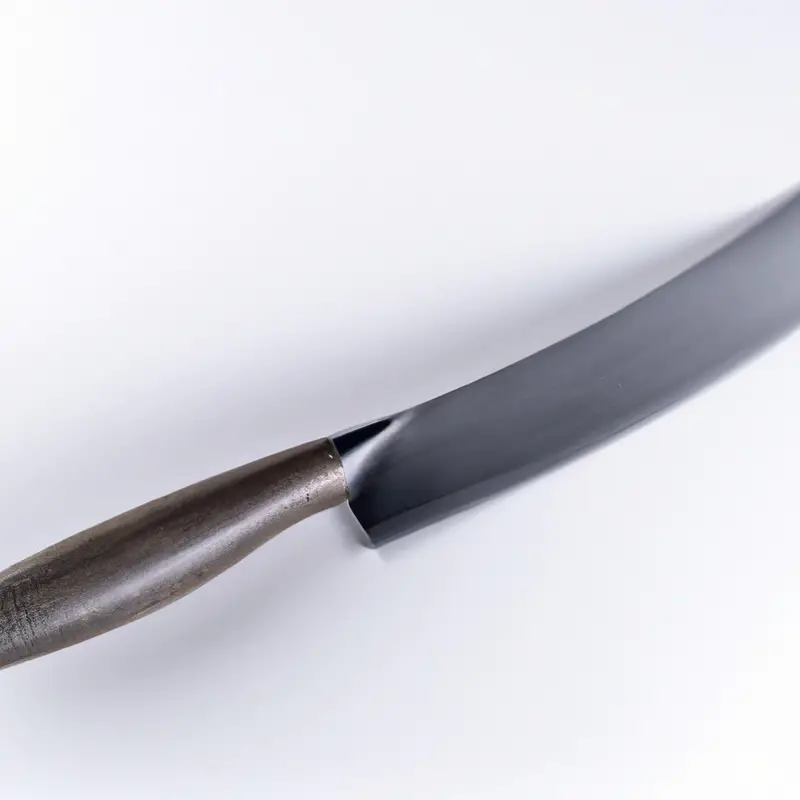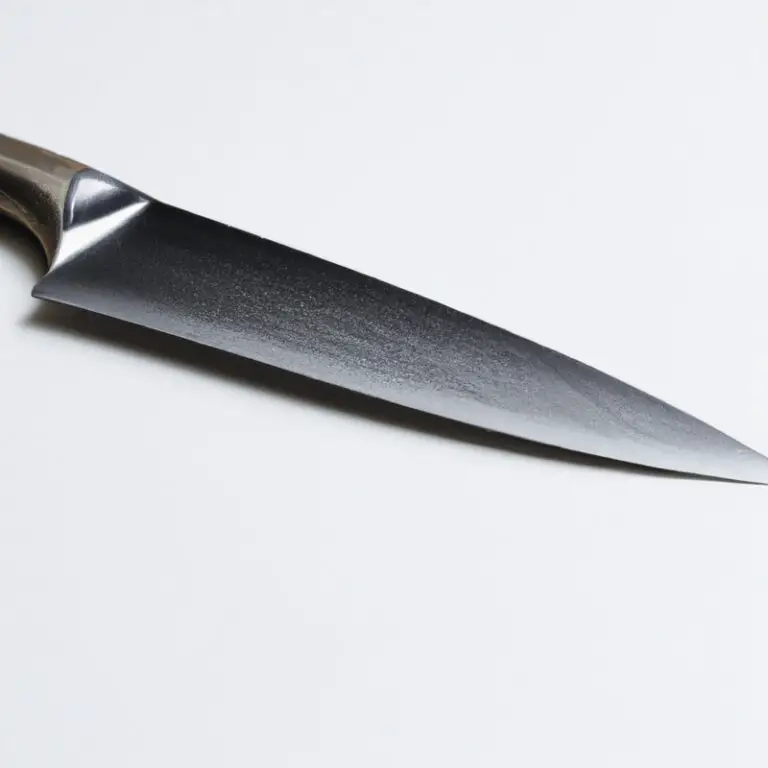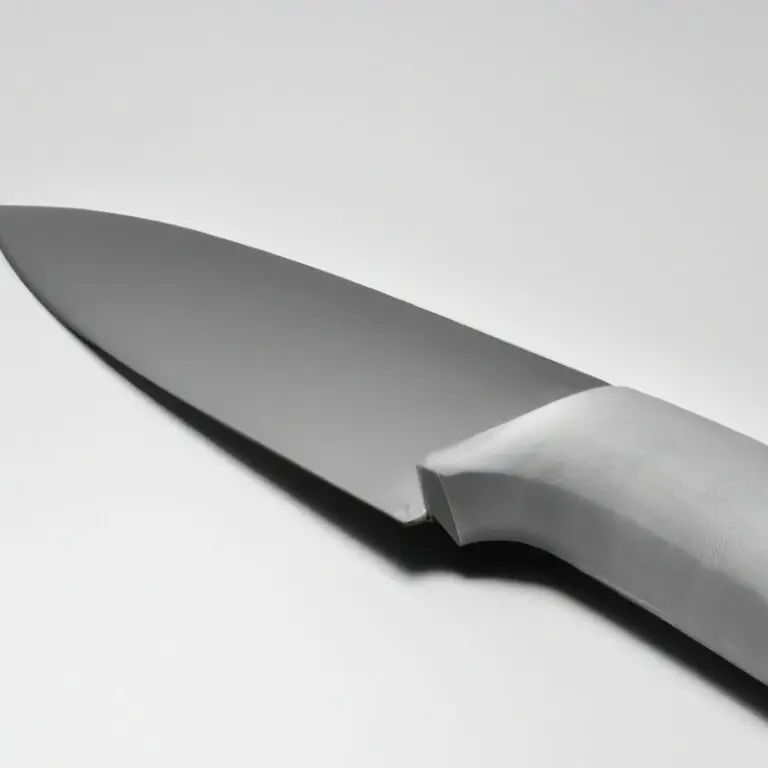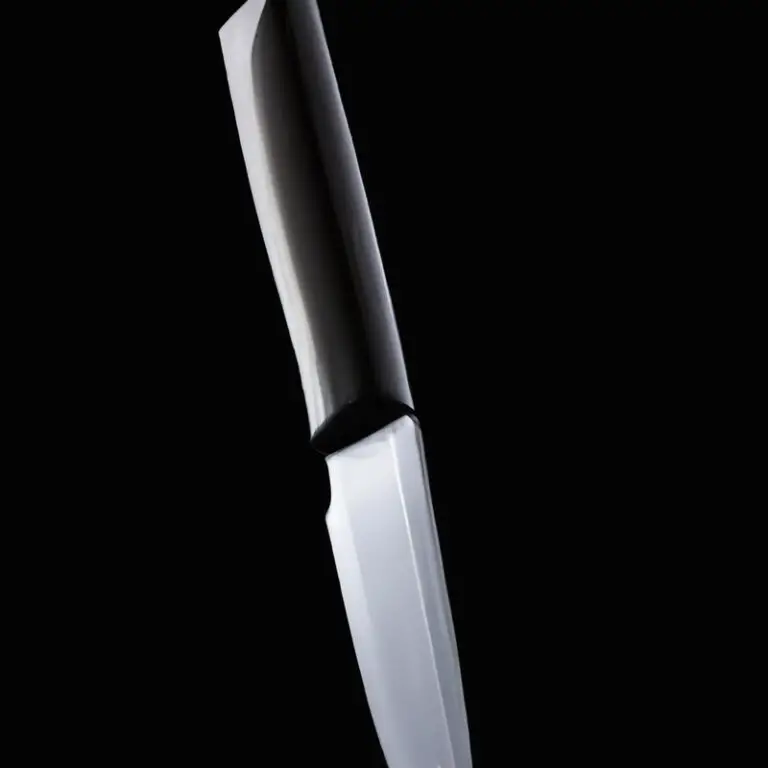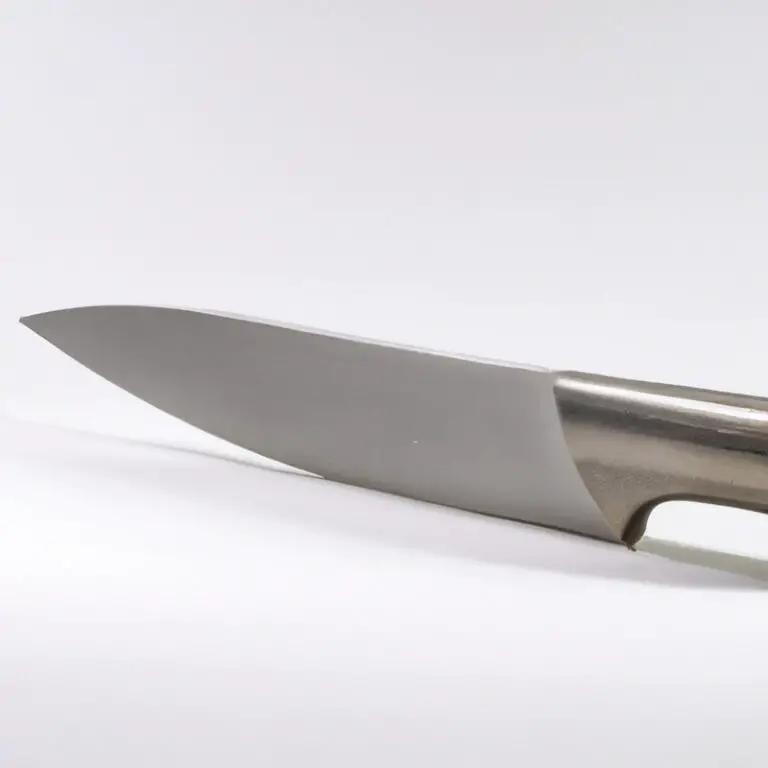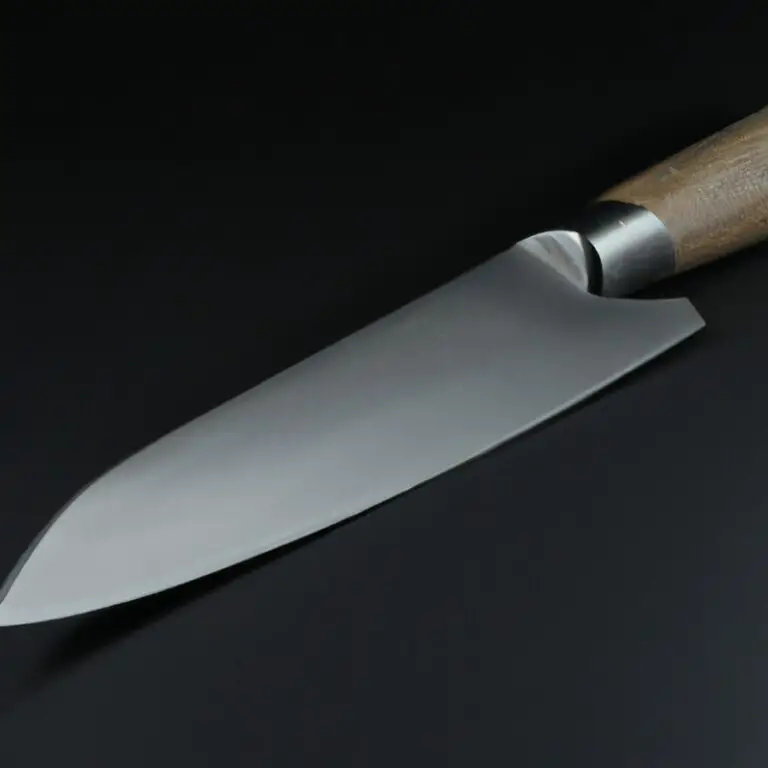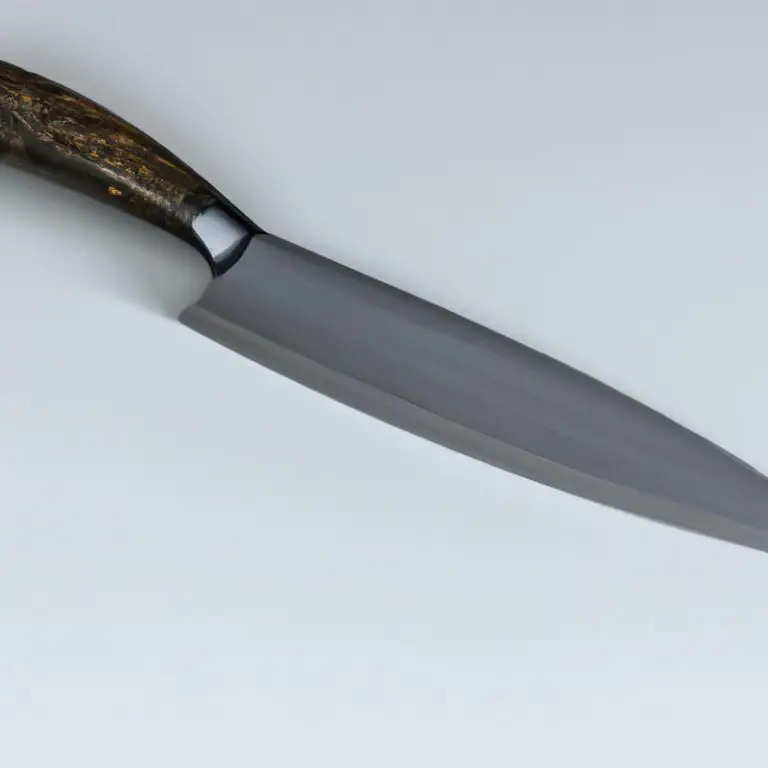How To Cut Delicate Fruits With a Santoku Knife Like a Pro
Key Takeaways:
- A Santoku knife is an ideal tool for slicing delicate fruits such as tomatoes and avocados due to its sharp and thin blade.
- Start by sharpening your Santoku knife before use and using a gentle sawing motion to slice through the fruit to avoid crushing it.
- Use a slicing motion to cut through the fruit skin first before slicing through the flesh.
- Always exercise caution and steady hand when handling a Santoku knife, and ensure the blade is dry and clean to prevent any slippage or accidents while in use.
Delicate fruits, such as tomatoes, kiwis, and mangos, require precision and care when being sliced. And if you’re a fan of these fruits, you’ll know that using the right knife can make all the difference.
Enter the Santoku knife, a Japanese blade known for its versatility and sharpness.
As someone who has struggled with cutting fruits in the past, I was keen on mastering the skills of using a Santoku knife. In this article, I’ll provide you with a step-by-step guide on all you need to know to perfect your technique and cut through delicate fruits like a pro.
| Cutting Technique | Description |
|---|---|
| Bridging Technique | Place the fruit on a cutting board, cut off the top and bottom, and slice it in half. With the flat side of the fruit facing down, make horizontal cuts, and then vertical cuts to create a grid pattern. Carefully slide the knife underneath the fruit’s flesh to remove the cubes. |
| Claw Grip Technique | Start by slicing the fruit in half and then laying flat on the cutting board. Place one hand flat on the top of the fruit with your fingers curled slightly to protect them. Using a back-and-forth sawing motion, cut thin slices of the fruit, moving the knife back and forth until you have sliced through all the flesh. |
| Fan Technique | Begin by cutting off the top and bottom of the fruit. Carefully slice off the skin from the sides with the knife held horizontally. Turn the fruit on its side, and use the tip of the knife to slice along the natural curve of the fruit and remove the seeds. Finally, cut into thin slices the remaining flesh. |
Understanding the Santoku Knife: A Brief Overview
Understanding the Santoku Knife: A Brief Overview The Santoku knife is a multipurpose Japanese knife that has gained popularity in Western kitchens due to its versatility and unique design. “Santoku” translates to “three virtues” because it excels in slicing, dicing, and mincing.
This knife usually has a straight edge and a blade length of around six to seven inches.
The Santoku knife’s blade thickness is typically thinner than Western-style chef knives, making it easier to create straight cuts without excessive pressure. It also has a flatter belly, which reduces the chance of food sticking to the blade.
The handle of a Santoku knife is typically shorter and lighter than a Western-style chef knife, making it comfortable for smaller hands or extended use.
Keep in mind that while a Santoku knife is excellent for slicing and dicing delicate fruits, it may not be suitable for all tasks. It’s essential to consider the purpose of the knife and the techniques that it suits best before making a purchase.
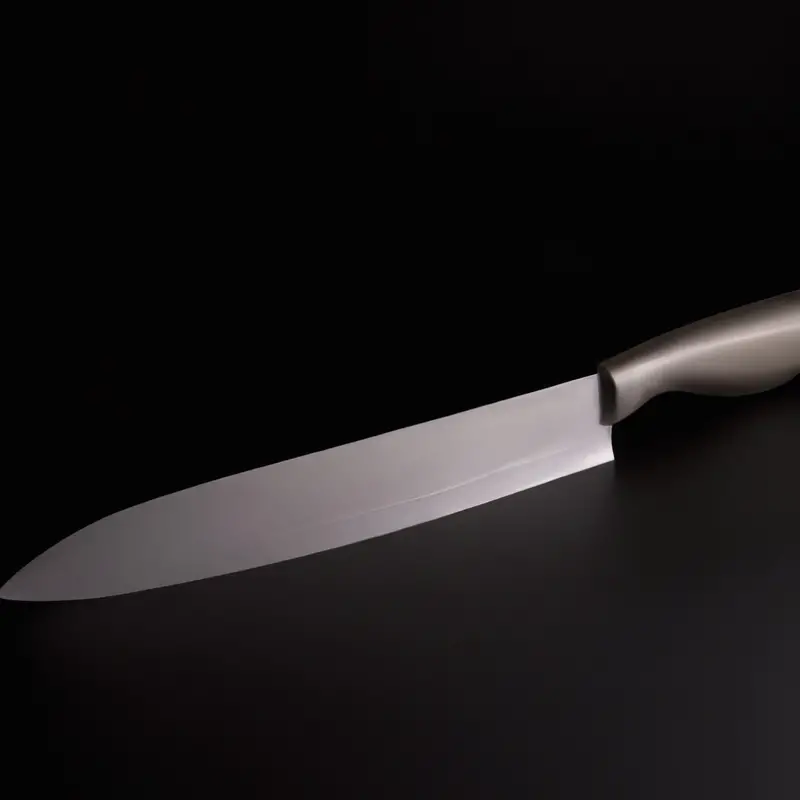
Why Choose a Santoku Knife for Delicate Fruits?
A Santoku knife is an excellent choice for cutting delicate fruits for several reasons. Its unique design features a thinner and shorter blade than traditional chef’s knives, which makes it more maneuverable for precise cuts.
The sharp, straight edge ensures that the fruit’s delicate flesh is cleanly sliced without excessive pressure or bruising.
The granton edge markings on the blade also help prevent sticking, making it easier to slice through soft fruits like peaches and tomatoes. Additionally, the wide blade allows for more surface area contact with the cutting board, providing stability and reducing the risk of injury.
Overall, a Santoku knife is an ideal tool for cutting delicate fruits with ease and precision.
The Anatomy of a Santoku Knife: Features to Look For
A Santoku knife typically measures 5-8 inches in blade length and has a unique, symmetrical shape. Here are some features to look for in a Santoku knife:
- Blade: Look for a blade that is made of high-quality steel, such as VG-10 or Damascus steel, which will provide long-lasting sharpness. It should also have a balanced weight distribution for easy handling.
- Grind: The blade should have a full flat grind, which means that it tapers from the spine to the edge in a straight line, allowing for precise slicing.
- Edge: The edge of a Santoku knife is typically straighter than that of a chef’s knife. Look for a sharp, straight edge that can easily slice through delicate fruits without crushing them.
- Bolster: A bolster is the thick piece of metal that separates the blade from the handle. A Santoku knife usually has a small bolster or no bolster at all, providing a comfortable, ergonomic grip.
- Handle: The handle should be comfortable to hold and provide a secure grip. Look for a handle made of durable materials, such as G-10 or micarta.
Overall, when choosing a Santoku knife, look for a high-quality blade, full flat grind, straight edge, comfortable handle, and balanced weight distribution. These features will help you get the most out of your Santoku knife when cutting through delicate fruits.
Perfecting your Grip: How to Hold a Santoku Knife
To perfect your grip while using a Santoku knife, follow these steps:
- Hold the handle firmly: Wrap your fingers around the handle of the knife, making sure to keep them close together to provide better control.
- Place your thumb on the spine: Rest your thumb on the blunt edge of the knife’s spine for added stability.
- Position your index finger: Let your index finger guide the blade, placing it on the top of the handle, right before the blade starts.
- Balance and leverage: Balance the weight of the knife in your hand by holding it near the blade’s heel. Use your wrist to create leverage and control the blade’s movement.
- Practice makes perfect: Hone your skills by practicing your grip and experimenting with different grips to find the one that works best for you. Repeat this process until you feel comfortable with the knife in your hand.
Perfecting your grip is crucial in ensuring your safety while using a Santoku knife. By following these steps, you can achieve a firm and stable grip, making it easier for you to cut through delicate fruits with precision.
Mastering Knife Techniques: Basic Cuts for Cutting Fruits
To master knife techniques for cutting fruits with a Santoku knife, it’s essential to learn the basic cuts. The primary cuts are slicing, dicing, and chopping.
Slicing is useful when cutting through large fruits like watermelon or pineapple, while dicing is perfect for smaller fruits like strawberries or grapes.
Chopping is ideal for fruits like apples or pears. For all cuts, always start with a stable surface and make sure your Santoku knife is sharp.
Hold the fruit firmly with one hand and make sure your fingers are away from the blade.
Use a rocking motion with the knife to cut through the fruit and maintain a consistent speed and angle. Remember to keep the blade clean and to use a cutting board to avoid any damage to your kitchen counters.
By following these basic techniques, you can confidently cut through delicate fruits with your Santoku knife.
Step by Step Guide: How to Cut Through Delicate Fruits with a Santoku Knife
Step-by-Step Guide: How to Cut Through Delicate Fruits with a Santoku Knife
- Choose a ripe, firm fruit and ensure it is washed and dried completely.
- Hold the fruit steady on a cutting board with your non-dominant hand.
- Take a Santoku knife with a sharp blade in your dominant hand and position it at the top of the fruit.
- Use a gentle sawing motion to cut through the flesh of the fruit. Avoid applying too much pressure or force, as this can damage the flesh or squash the fruit.
- Repeat the process, slowly cutting away the skin and flesh of the fruit in thin, even slices.
- For larger fruits, such as melons, divide them into smaller wedges before cutting into slices.
- Practice this technique with different fruits, such as peaches, mangoes, and kiwis, to perfect your knife skills and achieve beautifully cut fruit.
Remember to keep the blade of the knife sharp and use a cutting board to protect your countertop. Also, use caution and avoid rushing while cutting to prevent accidental injury.
Safety First: Tips to Avoid Injury while Using a Santoku Knife
When using a Santoku knife, safety should always be your top priority. Here are some tips to help you avoid injury while using this versatile knife:
- Choose the right size: Pick a Santoku knife that is appropriate for the task at hand. A smaller knife would be ideal for delicate fruits, making it easier to handle and manage.
- Hold the knife properly: Grip the handle of the knife firmly with your thumb and index finger wrapped around each side of the blade. This will give you greater control while you cut.
- Keep your fingers safe: Curl your fingers under and keep them away from the blade. This way, you’re less likely to cut yourself even if the knife slips.
- Cut on a stable surface: Always cut on a stable, flat surface that won’t slip or move around. This way, you’ll be able to focus more on your technique and not worry about the knife slipping off the surface.
- Keep the blade sharp: A dull blade is more dangerous than a sharp one. Sharpen your Santoku knife regularly to ensure that it cuts through food with ease. Use honing steel to give your knife that extra sharpness.
By following these tips, you’ll be able to safely handle your Santoku knife while cutting delicate fruits. Remember that using any knife in the kitchen requires caution and practice.
If you’re new to using a Santoku knife, it’s important to start slow and eventually build up your confidence and skill level.
Proper Care and Maintenance of Your Santoku Knife
Proper care and maintenance of your Santoku knife is crucial to ensure its longevity and performance. Here are some essential tips to keep your knife in top shape:
- Clean the blade after each use with warm, soapy water and a soft cloth. Avoid using harsh or abrasive cleaners that can scratch the blade.
- Dry the blade thoroughly to prevent rusting.
- Store your knife in a knife block or sheath to protect the blade and prevent accidents.
- Regularly sharpen your knife using a sharpening stone or a honing rod to maintain its sharpness and effectiveness.
- Avoid using your Santoku knife to cut hard materials like bones or frozen foods as it can damage the blade.
- Always use a cutting board when using your knife to protect the blade from scratches and prevent the risk of injury.
By following these simple care and maintenance tips, your Santoku knife will remain sharp, safe, and efficient for years to come.
Common Mistakes to Avoid When Using a Santoku Knife
Common Mistakes to Avoid When Using a Santoku Knife:
- Twisting the Knife: Avoid twisting the knife while cutting as it may damage the blade and make the cut uneven.
- Pressing too Hard: Do not apply too much pressure while cutting as this may damage the fruit or the blade of the knife.
- Using an Improper Cutting Board: Avoid using a hard surface as a cutting board as it can damage the blade, instead opt for a soft material like wood or plastic.
- Improper Sharpening: Ensure your knife is sharpened properly before using it as a dull knife can damage the fruit and make the cut ragged.
- Improper Storage: Storing your knife improperly can also damage the blade. Always keep the knife in a knife block or a sheath.
By avoiding these mistakes, not only will you be able to cut through delicate fruits with ease, but you will also increase the lifespan of your Santoku knife.
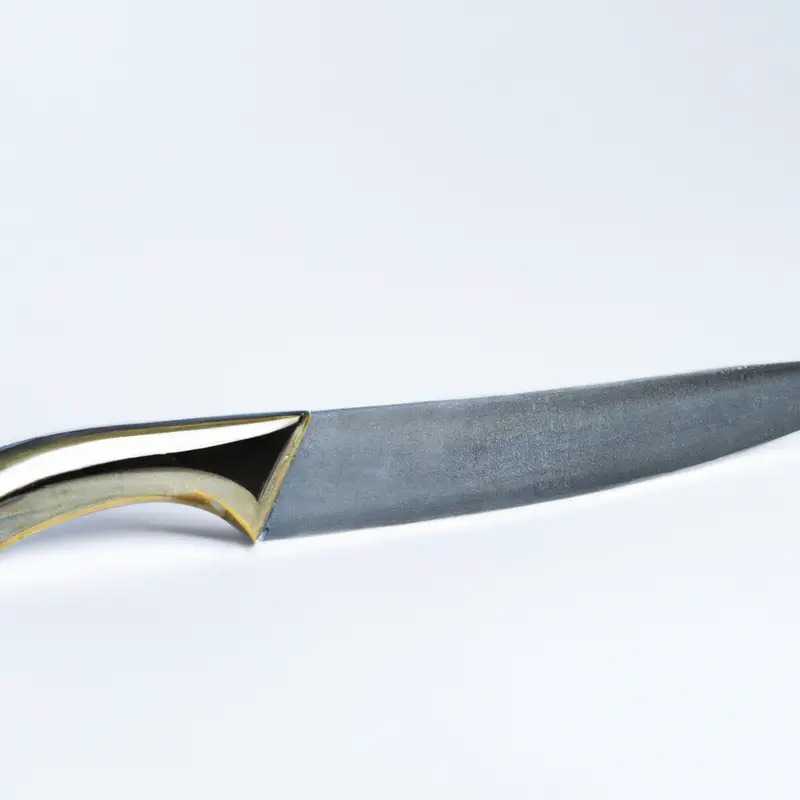
Advantages and Disadvantages of Using a Santoku Knife for Cutting Fruits
Advantages of Using a Santoku Knife for Cutting Fruits:
- The wide blade of a Santoku knife provides ample space for slicing through fruits like watermelon, pineapple, and cantaloupe with ease.
- The flat edge of the knife helps create straight, even cuts, resulting in visually appealing fruit platters.
- The curved tip of a Santoku knife works well for removing stems, cutting around pits, and slicing through tough fruit skins.
Disadvantages of Using a Santoku Knife for Cutting Fruits:
- The tall height of a Santoku knife can make it difficult to maneuver through smaller fruits like berries or grapes.
- The wide blade may be too hefty for slicing delicate fruits like tomatoes, which require a lighter touch.
- The flat edge of the knife may not work well for creating precision cuts or intricate designs, like those used in fruit carving.
Final Verdict
The Santoku knife is an excellent option for delicately cutting through fruits with precision and accuracy. Its unique design and features make it a reliable tool for any avid cook or beginner.
By perfecting your grip, mastering basic knife techniques, and following our step-by-step guide, you can easily cut through delicate fruits like a pro while avoiding injury.
Proper care and maintenance of your Santoku knife will also ensure its longevity and continued effectiveness. Remember to avoid common mistakes and weigh the advantages and disadvantages of using a Santoku knife.
With practice and patience, you will become a master at fruit cutting with a Santoku knife.
We hope this article has been helpful in providing you with actionable insights and inspire you to take your culinary skills to the next level.

